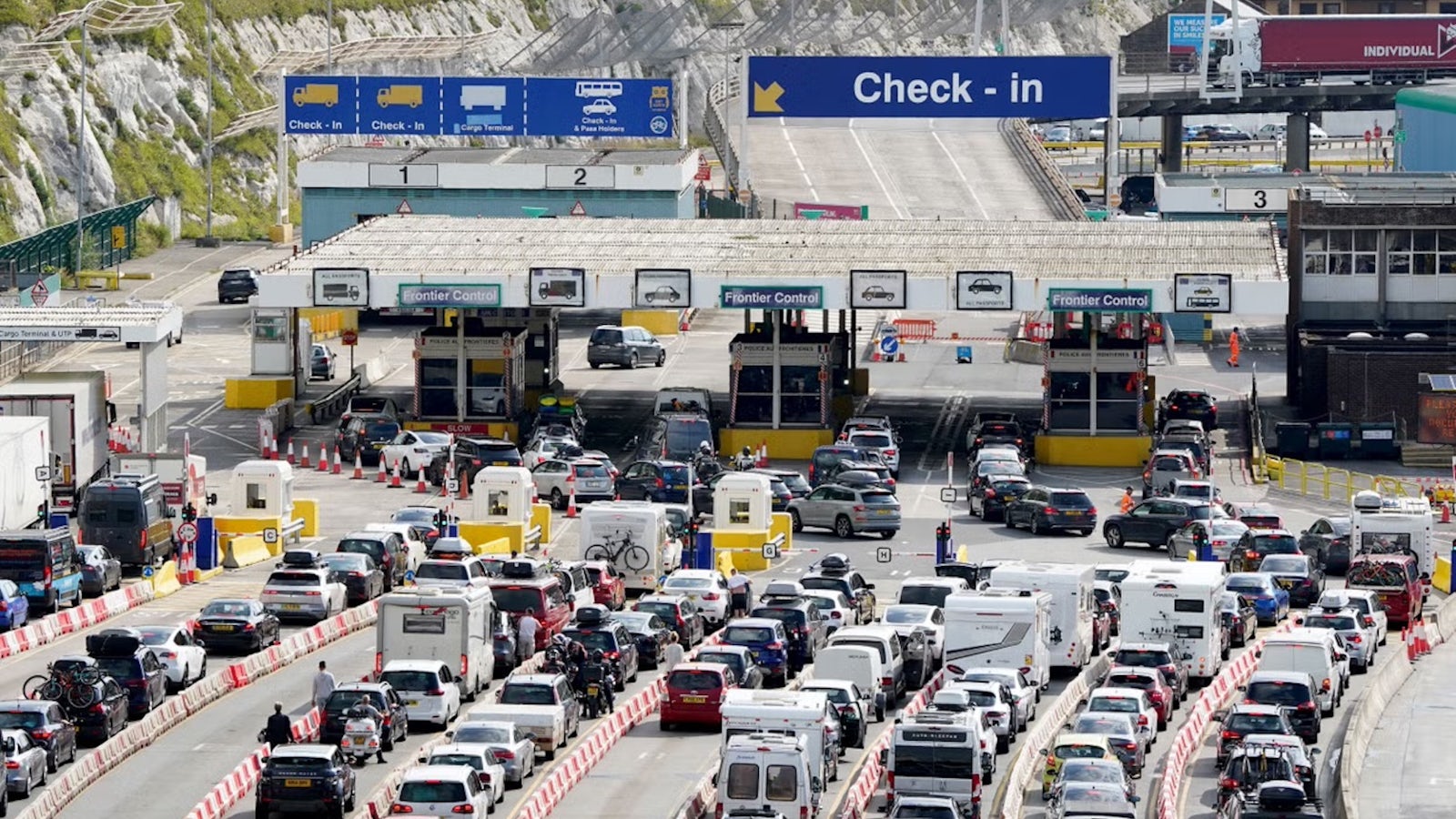Car changing is a big deal
From this autumn, UK drivers heading to Europe will need to register fingerprints and a photo at the border. Here’s how the new EU Entry-Exit System will affect your trip.
If you’re planning to drive to France or beyond this autumn, you’ll soon notice a big change at the border.
Starting today (12 October), the European Union (EU) is rolling out its long-awaited Entry-Exit System (EES). This new digital border control records when non-EU citizens, including UK travellers, enter and leave the Schengen Area. The rollout will be gradual, continuing until April 2026.
Here’s everything you need to know about the system and how it could affect your journey on the road to Europe.
Remember, you can buy a brand new or used car right here on Carwow. And you can sell your car, too. We’re here to help you through every step of your car-changing journey.
What is the Entry/Exit System (EES) and why is it being introduced?
The Entry/Exit System (EES) is a new digital border system the EU is introducing to track when non-EU citizens, including UK travellers, enter and leave the Schengen Area. Instead of traditional passport stamps, EES collects biometric data – a photo and fingerprints – to create a digital record of your travel.
The system is being implemented for two main reasons:
- It’ll help authorities detect overstays, identify potential threats, and improve border management across 29 European countries.
- Once registered, travellers’ details are verified automatically on subsequent trips, reducing the need for repeated manual checks and helping borders operate more efficiently.
So, while your first trip may take a few extra minutes, the EU hopes the system will make future border crossings faster and more secure.

How the new system works
For UK travellers, the first encounter for EES will depend on how you travel. Here’s a breakdown of what to expect:
- Driving to France via the Eurotunnel (Folkestone–Calais): From 12 October, only coaches and freight will register first. Car passengers will start using automated kiosks later this year. Each vehicle will pull up to a kiosk, where passengers’ passports will be scanned and biometrics collected.
- Ferries from Dover: From 12 October, coach passengers will be first to register, followed by car travellers from 1 November. Drivers will be directed to a new processing area near the port for EES checks.
- Eurostar from London St Pancras: Yes, this isn’t related to cars, but might be useful to know. Only selected business travellers will test the system at first, with a wider rollout in the coming months.
The process involves scanning your passport, answering a few questions about your trip, and giving fingerprints and a facial photo. Have any children under 12? They will be exempt from fingerprinting.
Once registered, your EES record will last three years. This means you won’t need to repeat the full process each time you travel.
Why it matters for UK drivers
EES applies to anyone entering the Schengen Area, which includes popular destinations such as France, Spain, Italy, Greece and Portugal. So even short cross-Channel trips will involve biometric checks.
The biggest worry is potential queues, particularly at Dover, where space is tight and most checks happen before boarding. However, both Eurotunnel and port authorities say they’ve added extra kiosks, staff and waiting areas to keep traffic flowing.
A new mobile app will eventually allow travellers to complete part of the process in advance, but it won’t be widely available at first.
So, when should you expect these changes? Here are some dates to keep in mind:
- 12 October 2025: System begins at Dover, Eurotunnel, and Eurostar (limited rollout).
- Late 2025: Automated car kiosks go live at Eurotunnel.
- By April 2026: EES active across all Schengen border crossings.
Officials hope the gradual rollout will prevent the kind of border chaos many feared when EES was first proposed.
What to look out for with the new system
When driving to Europe this autumn, there are a few things UK travellers should keep in mind with EES:
- Check requirements in advance: Procedures can vary between ports, Eurotunnel terminals, and airports. Make sure you know what’s expected at your departure point.
- Expect slightly longer checks: Border crossings may take more time during the rollout, especially at busy periods such as school holidays or Christmas. Leave extra time to avoid stress.
- Digital EES record lasts three years: Once registered, future trips may only require a quick fingerprint or photo, speeding up subsequent crossings.
- Be prepared: Have your passport ready and follow instructions at kiosks or from border staff.
Ultimately, while the first few trips might take a little longer than usual, the system is designed to make travel more efficient in the long run.
Car change? Carwow!
Looking for a new set of wheels? With Carwow you can sell your car quickly and for a fair price – as well as find great offers on your next one. Whether you’re looking to buy a car brand new, are after something used or you want to explore car leasing options, Carwow is your one stop shop for new car deals.
Click here to follow us on WhatsApp, where you can keep up-to-date with all the latest news, reviews, advice guides and videos.
